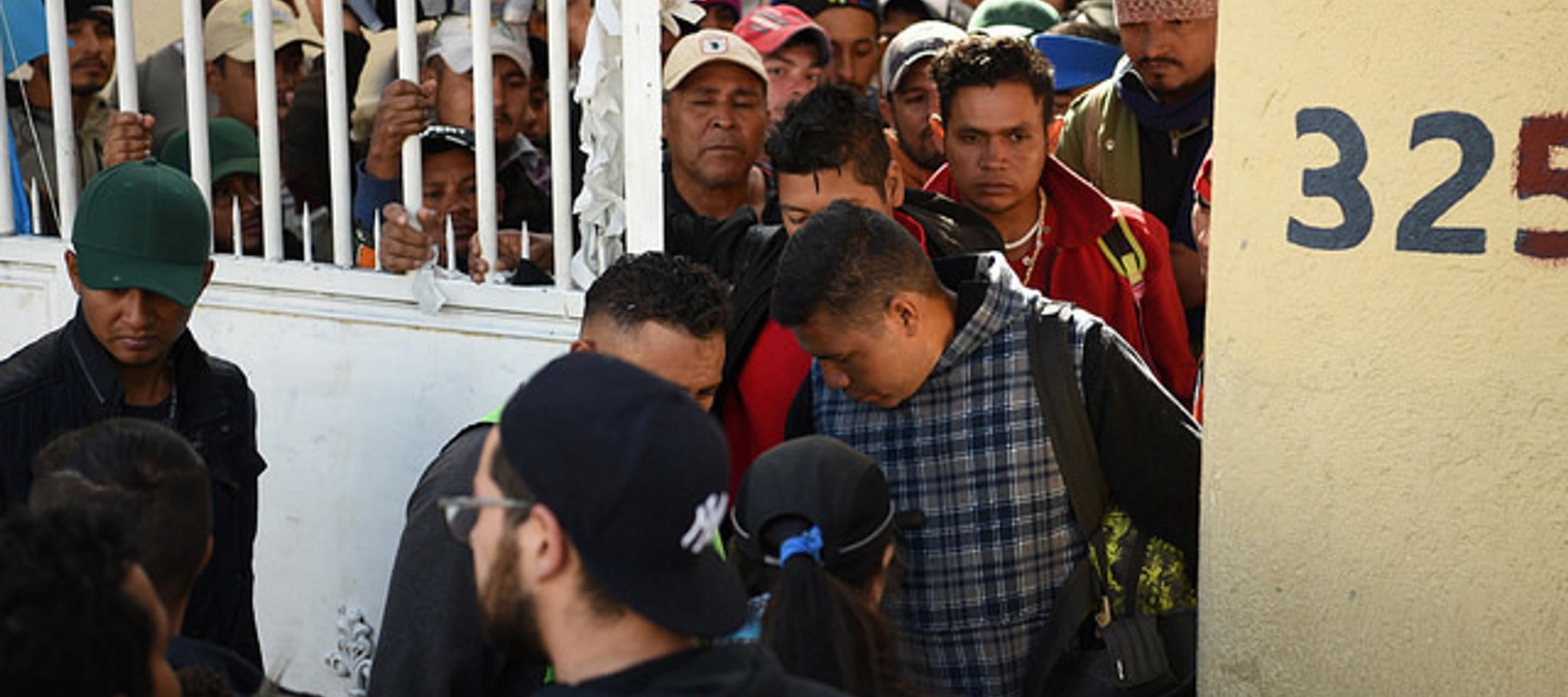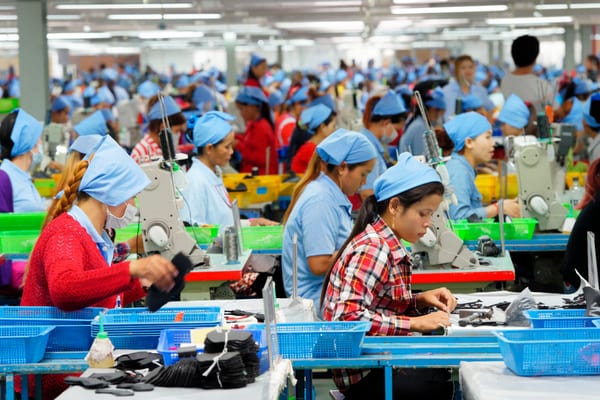The Compounding Impacts of COVID-19 on Migrant Workers Across Asia (Pt 1)
22 July 2020

COVID-19 and Migrant Workers
As part of our continuing focus on the links between COVID-19 and the business and human rights agenda, IHRB is exploring the impact of the pandemic on migrant workers across Asia and the roles and responsibilities of businesses in addressing these challenges. Most of the 35million+ migrant workers estimated to live and work in the Gulf Cooperation Council (GCC) countries are from Africa or South and Southeast Asia. Across the Association of Southeast Asian Nations (ASEAN) states, an estimated 10 million migrant workers live and work in major destinations such as Malaysia, Singapore, and Thailand. During the pandemic, countries in the GCC and Singapore were ranked in the top ten for infection rates per million, and almost all cases were from migrant workers living in dormitories.
This five part series begins with an overview of the range of challenges facing migrant workers throughout South East Asia as a result of the ongoing COVID-19 pandemic. Subsequent pieces in the series will cover accommodation conditions, discrimination issues, recruitment fees and wage theft, as well as impacts to migrant workers’ remittances back home.
Closed businesses, empty city streets, and airports have become global symbols of the COVID-19 pandemic.
All of us have been directly or indirectly impacted through lockdown measures – movement and travel restrictions imposed across cities and countries, affecting schools, work spaces, and other activities. The pandemic has had a dire impact on businesses and shaken the global economic system, forcing many storefronts to shutter and many workers to relocate to their homes. Working from home has been an option for some, whose tasks can be accomplished at the desk or online. Meanwhile, health professionals and other workers on the frontline, such as in agriculture, food processing, transport and logistics, including seafarers, have been working in harm’s way to keep essential services and supply chains from grinding to a global halt.
The coronavirus crisis has brought issues of inequality and injustice in society into the spotlight. There have been reports of racist and xenophobic attacks on Asians and businesses refusing service, especially to those who looked Chinese as they were assumed to be carriers of the virus. The pandemic further highlights the widening gaps in the treatment of lower-paid and low-skilled workers who build our cities, farm our foods, deliver our products, and perform a wide variety of essential services. These are the workers often hired to perform jobs that can only be performed at the site itself, e.g. in farms, slaughterhouses, mines, oilfields, and construction sites.
Among the hardest hit by the pandemic have been millions of migrant workers.
The pandemic highlights the widening gaps in the treatment of lower-paid and low-skilled workers who build our cities, farm our foods, deliver our products, and perform a wide variety of essential services.
Many have been confined to poor living conditions in cramped dormitories, experienced job loss or non-payment of wages, been forced by employers to take unpaid leave or reduced wages, or repatriated back home with few to no alternative work options. Many struggle with the dilemma of exercising their right to return in these circumstances, while others remain stranded in cities without access to services or support, or in border areas, living in “quarantine facilities” with precarious conditions. They face discrimination in their destination countries, and sometimes when they return home, as suspected virus carriers.
Migrant workers have been repatriated without consideration to their predicament. Many have been repatriated to situations of debt, as they will continue to pay off the recruitment fees and costs they took on to get their overseas jobs, despite returning home empty handed.
Travel Bans Trigger Border Crossings
When governments declared nationwide lockdowns and banned travel in and out of their countries, many migrant workers in South and South East Asia could not return to their home countries or were left with no accommodation or wages.
- In Thailand, hundreds of thousands of workers from neighbouring countries like Myanmar, Laos, and Cambodia fled home after a lockdown left them with the prospect of being trapped outside their countries of citizenship without money or food.
- The Myanmar and Cambodian embassies discouraged migrant workers from returning home when 60,000–200,000 migrant workers tried leaving before border closures and the crowded bus stations and border areas raised fears of infection.
- In India, as businesses closed down overnight, hundreds of thousands of migrant workers suddenly without income felt they had no choice but to walk hundreds of kilometres to return to their home towns, or camped at border check points as they were unable to return to home.
- Thousands of Nepali migrant workers were stuck for days at the Karnali border without basic amenities as the provincial government sought to test them all for COVID-19 before letting them in.
- When Malaysian work permit holders, who commute across the border to Singapore daily, decided to stay in Singapore to keep their jobs, there were reports of Malaysian migrants sleeping near train stations because their employers had not promised them accommodation.
- In Bangladesh, due to flight suspensions, about 200,000 prospective migrants were left stranded. These migrants had already taken out loans and paid for their recruitment costs, but now have no way to pay them back. In addition, hundreds of thousands of Bangladeshi workers living abroad have lost their jobs, leading to a 25% decrease in money sent back to their families over the past few months.
Last in Line Status of Migrant Workers
With many businesses’ safety nets overstretched and priorities given to retain local staff, many migrant workers were either laid off or were furloughed with their wages unpaid. For example, the rate of infection among migrant workers shook the Gulf states – a situation escalated by poor worker accommodation, access to accurate information, and effective grievance mechanisms for workers.
Efforts were then stepped up to repatriate large numbers of workers. Many of these workers, such as those who were working in Thailand and the GCC states, are now back in their home countries after being laid off, returned with the additional burden of unpaid recruitment fee debt.
- In Qatar, migrant workers had been stranded without work or payment, some turning to their employers or charities for food to get by.
- In Thailand, when the partial lockdown exempted the construction sector, hundreds of migrant workers from other sectors moved to work at high-rise buildings and apartment complexes, some as formal subcontractors but many as undocumented workers.
- In Kuwait and Bahrain, at least a dozen migrant workers took their own lives or attempted to in April, as the pandemic wreaked havoc on the mental health of migrant workers. Migrant community groups in Bahrain stepped up efforts to provide counselling to migrant workers, anticipating the rise in mental illness.
Many migrants in other countries have been caught in a similar dilemma between unemployment, starvation, or becoming undocumented, working in the informal economy with all the risks that entails.
Many migrants have been caught in a similar dilemma between unemployment, starvation, or becoming undocumented, working in the informal economy with all the risks that entails.
The Intersections of Vulnerability
Migrant workers typically do not enjoy the same rights as citizens of the host country. This leaves them in precarious situations during a crisis such as this.
They are among those most impacted by the coronavirus outbreak – where disruption of work has severely affected many who have limited access to adequate health care services, meals, clean water and sanitation, and now may find they have had to vacate the premises where they lived. Their problems are compounded by the fact that many lack adequate health coverage or other benefits, including unemployment insurance, should they lose work.
In Malaysia, the Immigration and Labour Departments had their services limited to very minimal levels in the wake of the pandemic. This raised many challenges for migrant workers already stigmatised and subject to discrimination and xenophobia, especially on issues of health, security, labour, and housing. By May 2020, more than one thousand undocumented migrants were detained after a series of raids – despite fears the crackdown could push vulnerable people into hiding and increase the infection risks in overcrowded detention centres.
Female migrant workers have been disproportionately severely hit by the crisis:
- They perform a diversity of roles ranging from domestic work, seafood processing, agriculture, construction, manufacturing, and hospitality.
- Many are on the front lines responding to the pandemic as care workers.
- They may be at greater risk of transmission due to their living and working conditions.
- Many may not be able to access essential services, especially when they need it most.
Resources to Respond
In a number of host countries across Southeast Asia and the Gulf states migrant workers are entitled to COVID-19 screening and treatment. Local civil society organisations working with migrant workers, however, have raised concerns that many are unaware of their entitlement to healthcare, or reluctant to seek medical assistance due to fears of having their work permits revoked, deportation, or forced repatriation.
As many migrant workers also lack access to technology, such as high-speed internet, civil society organisations have stressed the need to ensure updated and accurate information disseminated, through relevant and effective channels, to migrant worker communities in their own language.
Many organisations have been working tirelessly, providing assistance and food vouchers for laid-off or daily waged migrant workers, and other vulnerable migrants during the crisis.
The International Organization for Migration (IOM), the UN’s migration agency, has also been issuing guidance for employers and recruiters to uphold migrant worker protection during the health crisis.
IHRB’s report, Respecting Human Rights in the Time of the COVID-19 Pandemic, outlines the importance of the corporate responsibility to respect human rights, identifying where change is needed and where good practices are being implemented.
***
In Part 2, we will look at some of the issues that led to peak infection rates among migrant workers. In particular, the substandard living conditions of migrant workers’ accommodation. But what led to such poor conditions?




